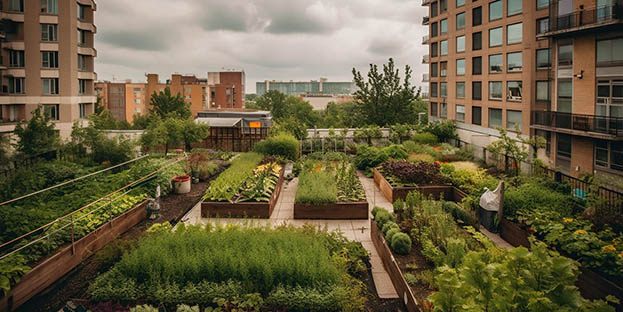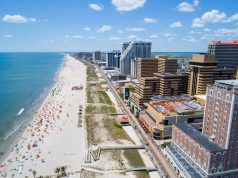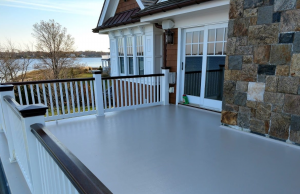As cities worldwide continue to grow, the challenges associated with urban living, such as increased air pollution, higher temperatures, and loss of biodiversity, become more pronounced. However, many cities are turning to an ancient solution dressed in modern garb: urban green spaces. From expansive parks to innovative green roofs and robust urban forests, these green spaces are not merely aesthetic enhancements. They are essential tools in building climate resilience, combating heatwaves, improving air quality, and fostering urban biodiversity. Melanie Wilson of MPC and Executive Director and CEO of the Chatham-Savannah Metropolitan Planning Commission explores how various cities globally are harnessing the power of nature to address the pressing challenges of urbanization and climate change.
The Heat Island Effect and the Cooling Power of Green Spaces
Urban areas are often significantly warmer than their rural counterparts, a phenomenon known as the “urban heat island” effect. Melanie Wilson of MPC explains that this occurs because surfaces like asphalt and concrete absorb and retain heat more than natural landscapes. During heatwaves, the temperatures in these urban heat islands can become dangerously high, leading to increased energy consumption for cooling and heightened risks of heat-related illnesses.
To combat this, cities are investing in green spaces which naturally cool the air through shade and evapotranspiration (the process by which plants release water vapor). For instance, Melbourne, Australia, has embarked on an ambitious plan to double its tree canopy by 2040. By planting thousands of trees across the city, Melbourne aims to reduce the urban heat island effect significantly, making the city more livable during the increasingly frequent and intense heat waves.
Air Quality Improvement Through Urban Greenery
Air pollution is a severe issue in many cities, contributing to respiratory problems, cardiovascular disease, and other health complications. Melanie Wilson of MPC explains that urban green spaces can help mitigate this by acting as natural air filters. Trees and plants absorb pollutants like nitrogen dioxide, ozone, and particulate matter while releasing oxygen. Mexico City, known for its problematic air quality, has turned to urban green spaces as a part of its air purification strategy. The Via Verde project transforms hundreds of concrete columns supporting urban highways into vertical gardens, covering them with air-purifying plants. This initiative not only beautifies the city but also actively improves air quality.
Enhancing Urban Biodiversity with Green Corridors
Biodiversity in urban areas is often significantly lower than in undisturbed natural environments. However, urban green spaces can serve as vital habitats for plants and animals, helping to preserve and enhance biodiversity. Melanie Wilson of MPC emphasizes that by creating green corridors that connect larger green spaces, cities can provide safe passages for wildlife and promote the spread of various plant species. Singapore, often referred to as the “City in a Garden,” exemplifies this approach. The city-state’s Green Plan 2030 includes enhancing connectivity between parks and natural areas, allowing species to move freely across the city. This not only supports local wildlife but also enhances the genetic diversity of the plant populations, which is crucial for resilience to diseases and changing environmental conditions.
Green Roofs: Utilizing Urban Vertical Spaces
While parks and trees are the most visible forms of urban greenery, green roofs represent a critical, often underutilized strategy for making cities more climate-resilient. These living roofs provide insulation, reducing the need for artificial heating and cooling. They also manage stormwater, reducing runoff and lowering the risk of flooding.
Toronto, Canada, has been a pioneer in this area with its Green Roof Bylaw, which mandates the installation of green roofs on new commercial and residential buildings. Melanie Wilson of MPC explains that this law not only helps manage stormwater and improve insulation but also contributes to biodiversity and provides residents with much-needed green spaces in densely populated areas.
Community and Economic Benefits
Beyond the environmental impacts, urban green spaces offer significant social and economic benefits. Melanie Wilson of MPC explains that they are places for recreation and relaxation, which contribute to improved mental health and community well-being. Economically, properties near well-maintained green spaces often see increased real estate values. Furthermore, the development of green spaces can drive economic activity by creating jobs in landscaping, maintenance, and tourism. For example, the High Line in New York City, a park built on a disused elevated rail line, has revitalized the surrounding area and become a major tourist attraction, significantly boosting local businesses.
Urban green spaces are not just patches of green in a sea of concrete; they are vital infrastructure for sustainable urban living. Melanie Wilson of MPC emphasizes that by integrating nature into city planning, municipalities can create healthier, more resilient urban environments. As the global population continues to urbanize, the importance of these green spaces will only grow. Cities that invest in green infrastructure today are setting themselves up for a healthier, more sustainable future, proving that sometimes the best solutions are those that nature herself has provided.







